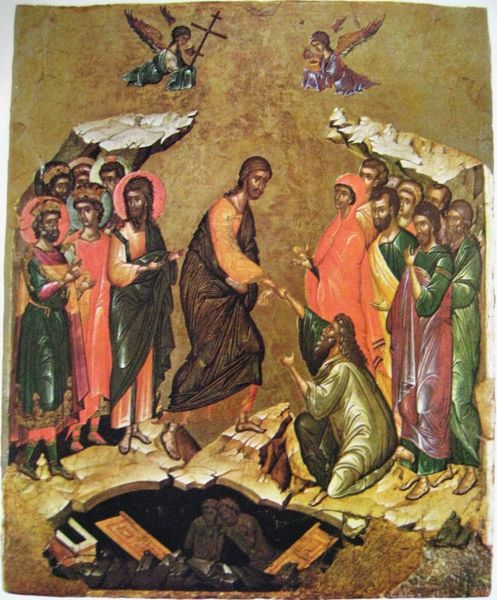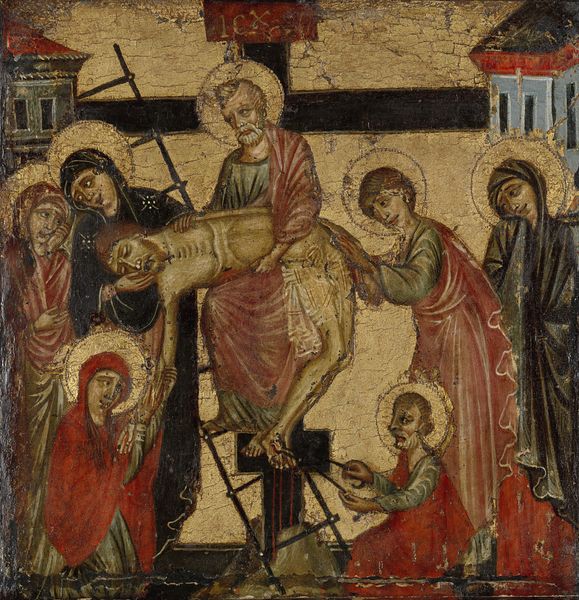
tempera, painting
#
byzantine-art
#
medieval
#
tempera
#
painting
#
figuration
#
oil painting
#
painting art
#
history-painting
Copyright: Orthodox Icons,Fair Use
Editor: This tempera on wood painting, “Descent from the Cross,” dates back to 1350. I’m struck by the expressions on the figures' faces, this potent display of raw grief and religious fervor. How do we interpret the intense emotionality within the historical and cultural context of Byzantine art? Curator: The profound sorrow is certainly palpable, isn't it? Consider that Byzantine art served not just aesthetic purposes, but also deeply spiritual and didactic functions. How do you see this scene functioning as a narrative for the masses, particularly within a society structured around hierarchies of power? Editor: It’s interesting to consider this icon as a tool, it really brings the historical period to life. In addition to that, what would you highlight in terms of the symbolism used here? Curator: The figures, while appearing somewhat stylized, are positioned and rendered to emphasize specific symbolic meanings. The halos denote sanctity. And the act of mourning itself speaks to shared human experiences while subtly reinforcing social and religious norms. Does the gendered nature of mourning here – with women taking on roles of emotional expression – prompt questions around women's positions in this era? Editor: Absolutely, thinking about the division of grief as representative of Byzantine culture highlights women’s roles within it, almost prescribing an outlet. I had never thought about the power of such prescriptive cultural depictions, which are telling beyond their obvious context. Curator: Exactly. The power of visual culture in shaping societal norms is truly important, and a feminist analysis of these roles helps decode that language. Seeing this, what do you make of its value within both an art historical and societal context? Editor: Viewing "Descent from the Cross" through a cultural lens emphasizes its place as a historical artifact beyond purely aesthetic merit, and more deeply connects with gender roles. It pushes me to question who had access to the painting, and for what purpose it existed. Curator: Precisely, we understand it through the lenses of class, religion, and gender roles. I trust you've gained more tools of thought today? Editor: Most certainly!
Comments
No comments
Be the first to comment and join the conversation on the ultimate creative platform.













